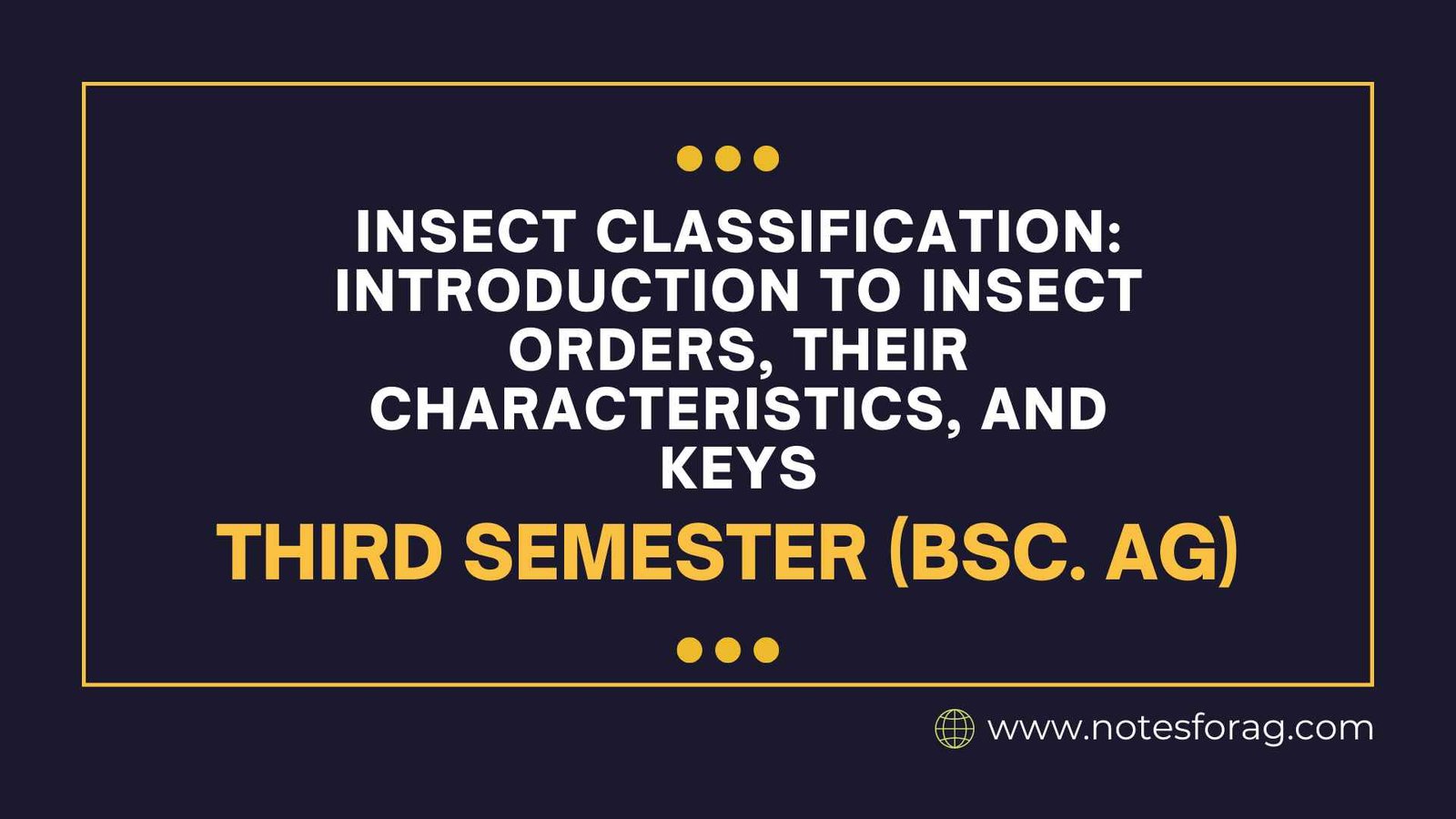Insect classification, a system for categorizing insects in the class Insecta, groups these immensely diverse arthropods based on characteristics such as segmented bodies, exoskeletons, three pairs of legs, and, in many cases, wings. They are distinguished by a segmented body, an exoskeleton, jointed legs, and occasionally wings. Insect Classification are categorized into different orders depending on fundamental characteristics like wing shape, mouthparts, and life cycles. The major insect orders are Coleoptera (beetles), Diptera (flies), Lepidoptera (butterflies), and Hymenoptera (bees). Insect identification is often done with tools such as dichotomous keys, which walk users through a step-by-step procedure of recognizing certain traits.
Table of Contents
Understanding Insect Classification
Insect classification is an important part of entomology because it gives a framework for comprehending the enormous diversity of this group. Insect classification enables researchers to classify and categorize species based on similar traits, facilitating research into their biology, ecology, and evolution. The fundamental insect classification system is hierarchical, beginning with the domain and progressing down to kingdom, phylum, class, order, family, genus, and species. This tiered design replicates creatures’ natural interactions, allowing scientists to identify and categorize diverse insect families in a methodical manner.
Characteristics of Insects
1. Body structure:
- Three different bodily regions: Head, thorax, and abdomen.
- The head houses sensory organs such as compound eyes, antennae, and mouthparts.
- The thorax has three jointed legs and, in many species, two sets of wings.
- The abdominal cavity holds the digestive, reproductive, and excretory systems.
2. Exoskeleton:
- A strong, chitinous exoskeleton provides support and protection while limiting water loss.
3. Respiration:
- Insects breathe by tracheae, which are tubes that supply oxygen straight to tissues.
4. Metamorphosis:
- Insects go through two types of metamorphosis: complete metamorphosis (holometabolous), which has four life stages (egg, larva, pupa, and adult), and incomplete metamorphosis (hemimetabolous), which has three phases.
Major Orders of Insects
1. Coleoptera (beetles)
- Characteristics:
- Two pairs of wings: the front pair (elytra) is toughened and shields the delicate hind wings.
- Chewing mouthparts.
- Examples: ladybugs, weevils, and fireflies.
2. Diptera (Flies)
- Characteristics:
- One pair of functioning wings (the hind wings are reduced to tiny structures known as halteres).
- Sucking, piercing, or sponging mouthparts.
- Examples: House flies, mosquitos, and fruit flies.
3. Lepidoptera (butterflies and moths)
- Characteristics:
- Two pairs of scale-covered wings.
- Coiled proboscis used for sipping nectar.
- Examples: Monarch butterflies and moths.
4. Hymenoptera (bees, wasps, and ants)
- Characteristics:
- Two pairs of membrane wings (other animals, such as ants, do not have wings).
- Mouthparts used for chewing and lapping.
- Some organisms exhibit complex social behaviors (for example, honeybees and ants).
- Examples: Honeybees, paper wasps, and ants.
5. Orthoptera (grasshoppers and crickets)
- Characteristics:
- There are two pairs of wings: the front pair is leathery, and the back pair is membraneous.
- Jumping using the hind legs.
- Chewing mouthparts.
- Examples: Crickets and grasshoppers.
6. Hemiptera (True bugs)
- Characteristics:
- Mouthparts are adapted for piercing and sucking.
- There are two pairs of wings, with the front pair being half membrane and half leather.
- Examples: Cicadas, aphids, and stink bugs.
7. Odonata (Dragonflies, Damselflies)
- Characteristics:
- Two pairs of huge membranous wings.
- Long, thin body and legs.
- Predatory with powerful biting mouthparts.
- Examples: Dragonflies and damselflies.
8. Isoptera (termites)
- Characteristics:
- Social insects form highly ordered colonies.
- Soft bodies, frequently pale in color.
- Wings are present only in reproductive individuals.
- Examples: Termites.
9. Blattodea (Cockroaches, Termites)
- Characteristics:
- Flattened body and leathery wings.
- Long antennae with eating mouthparts.
- Examples: Cockroaches.
10. Phthiraptera (lice)
- Characteristics:
- The body is flat and wingless.
- Adapted to parasitic lives, feeding on skin and blood.
- Examples: Head lice and body lice.
Insect Identification Keys
Keys are aids for classifying and identifying insects by directing the user through a sequence of options depending on insect features. There are two sorts of keys that are widely used:
- Dichotomous Keys:
- Uses paired statements or questions that lead to two options.
- Each stage narrows the possibilities until the bug is discovered.
- Pictorial keys:
- Images are used to identify insects by comparing observable traits.
Insect classification into several orders aids in understanding their biology, behavior, and ecological roles. These orders are based on physical characteristics such as wings, mouthparts, and body structure. Identification keys are valuable tools for entomologists and amateurs alike in accurately distinguishing species.
Frequently Asked Questions
What is the basis for classifying insects into different orders?
Insects are categorized into orders based on morphological traits such wing structure, mouthpart type, development (full or incomplete metamorphosis), and body segmentation.
What is the largest order of insects?
Coleoptera (beetles) is the largest order, with more than 350,000 recognized species.
Related Articles

